October 24th:
I want to start off with a word of praise for UPS; yesterday evening my package was in Louisville KY; this morning at 5:30 it was in Rockford IL; but I lacked faith, I didn’t believe it would get here today … and there it was on my doorstep at 3! Thanks, UPS!
This all came out of an inspiration from K6ARK’s minimalist SOTA radio kit post. The touch-paddles built right into the radio, terminating in two acorn nuts on the case was a brilliant idea! I could not find a suitable board or kit, however, so I cast a wider net and found this: “Super simple capacitive touch paddles for ~$6 in parts from Amazon”. Got on my Kindle to find the parts and place the order; 10 minutes later, here goes a new project!

I’m going to get started right away, watch for updates!
October 26th:
Moving forward, a little at a time. Yesterday evening I sawed out and sanded two strips of thin Lexan for the “paddles”:
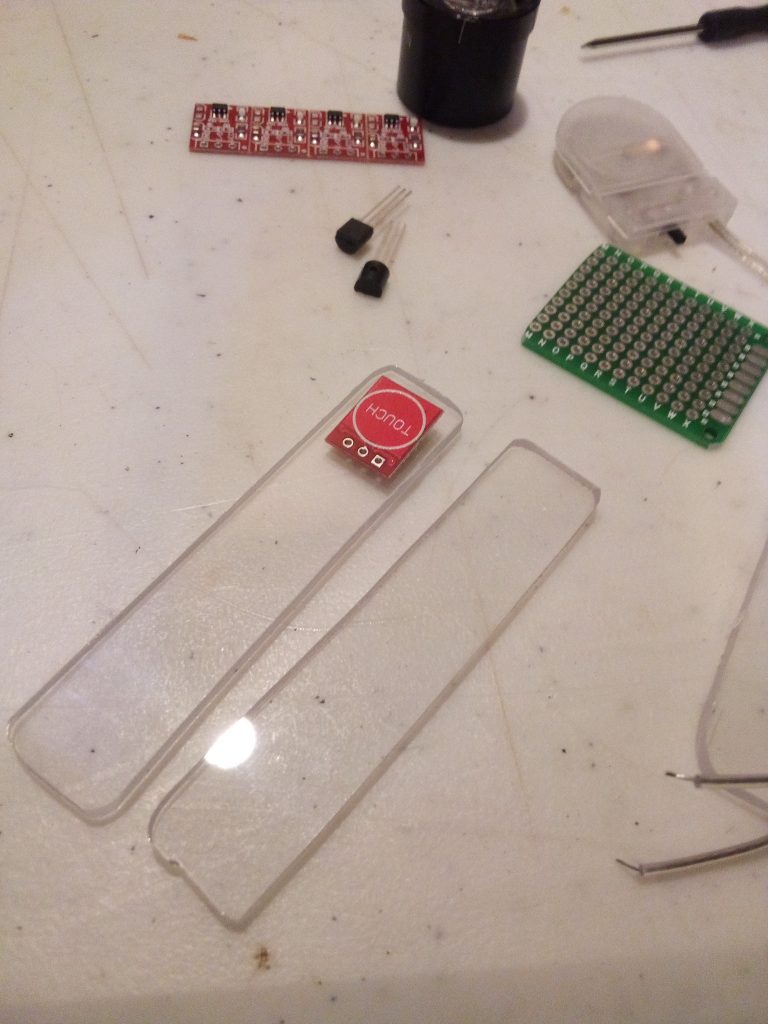
and did a quick function test of two of the modules:
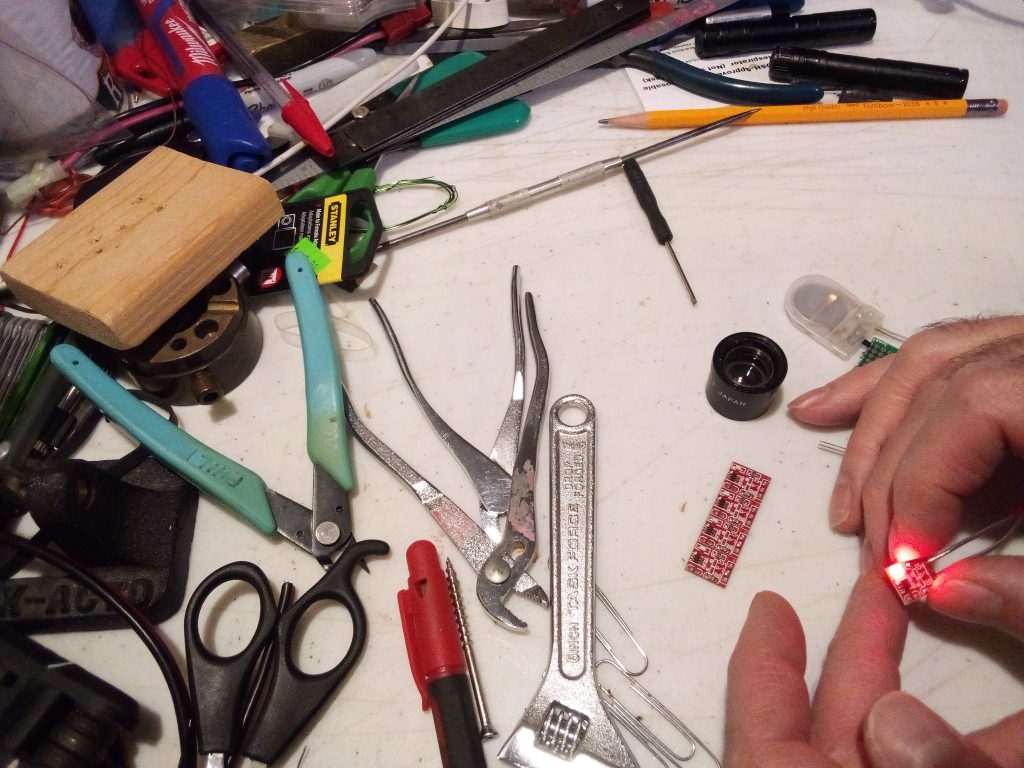
Early this morning I soldered lead wires on to them:

Now I need to find a heavy-bodied clear glue to attach the touch modules to the paddles, and figure out how the rest of the parts come together into a handy size and shape for portable radio use …
Thanks for visiting! Look for another update over the weekend!
October 28th
Yesterday I visited the Hardware Hank in a nearby town and ended up with this:
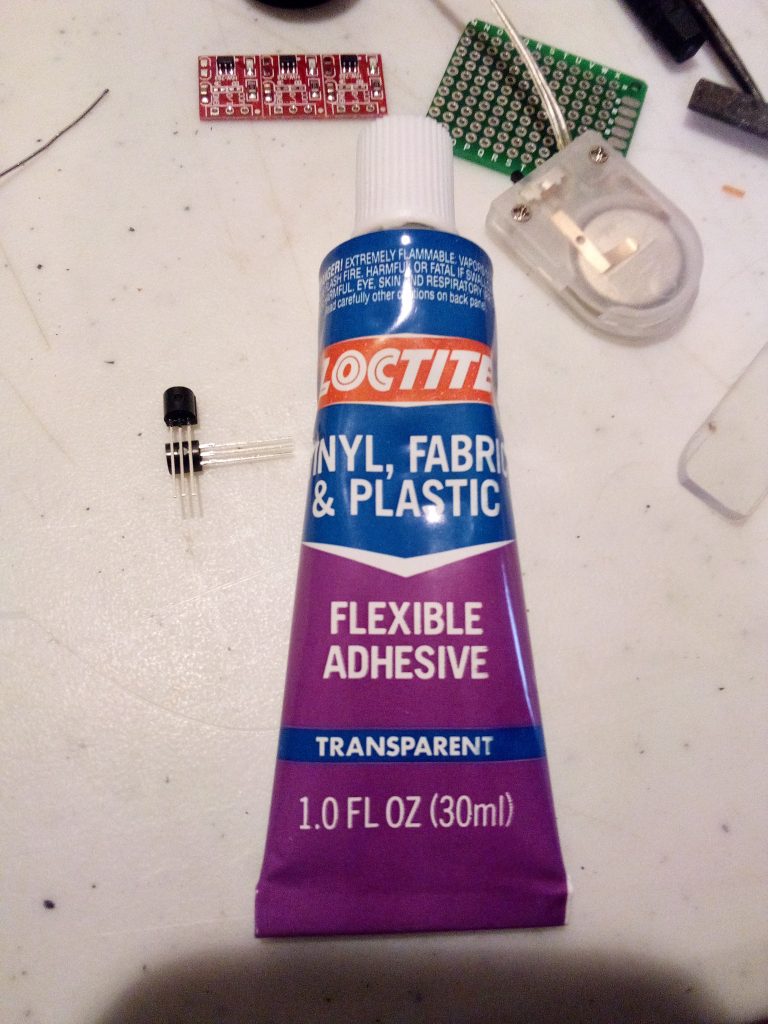
The choice was between this and clear RTV silicone, the same price for either one. Silicone is harder to work with, and clean up after, so I went with the solvent-based one.
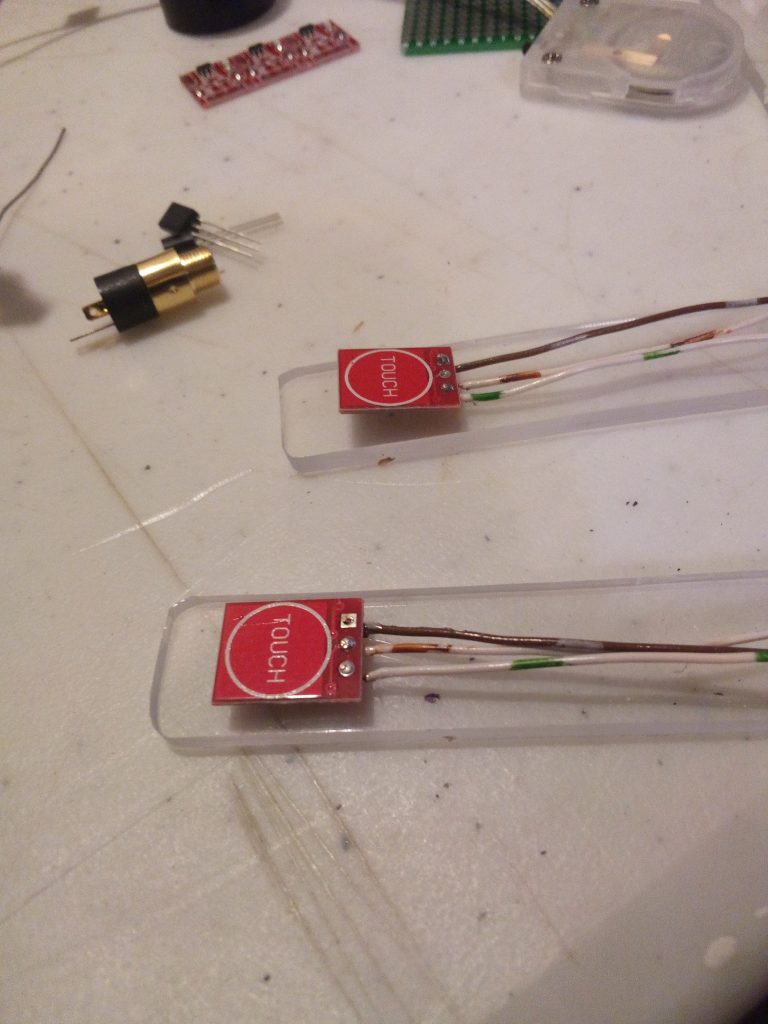
Two drops of glue on the component side of the little circuit board seemed to be just right. Stuff was about the same consistency (and smell) as Duco cement or old-school “airplane glue”.

They should be good to go tomorrow. I still don’t have a clear vision of how the rest of it is all going to fit together … visually I’m trying for something like these: VK3IL’s pressure-sensitive touch paddles.
Thanks for visiting, there should be more tomorrow!
October 29th
It didn’t snow last night, so no excavating was required to retrieve the paddle assemblies from the deck. Seem to be sticking okay, no MEK smell, all good!

No further along on how to arrange the remaining parts for best effect, but it’s still early; maybe more later today.
October 30th
So when I started to bend one of the leads today, the whole touch sensor came off in my fingers! I may have made a poor choice of adhesive! The other sensor also came free with only slightly more effort. Both came away clean, so a few moment’s work with a razor blade removed the residue from the “paddles” and it was time for another try.
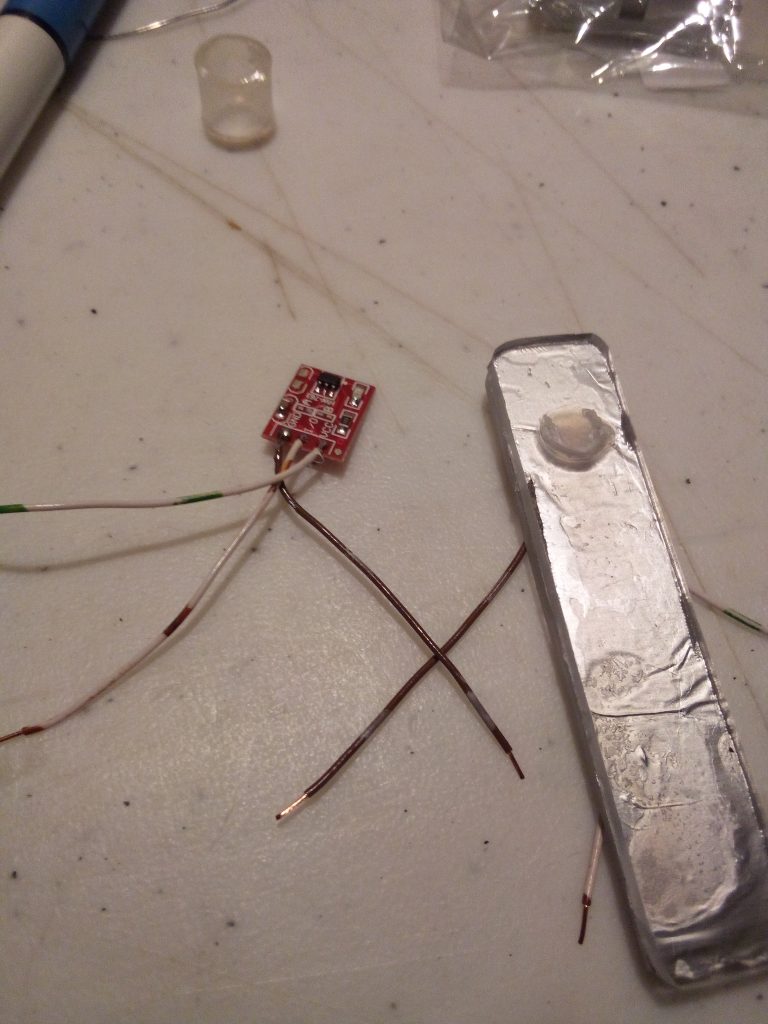
Why didn’t I think of 5-minute epoxy in the first place? No worries; a few minutes work had them glued up again and clamped for curing.
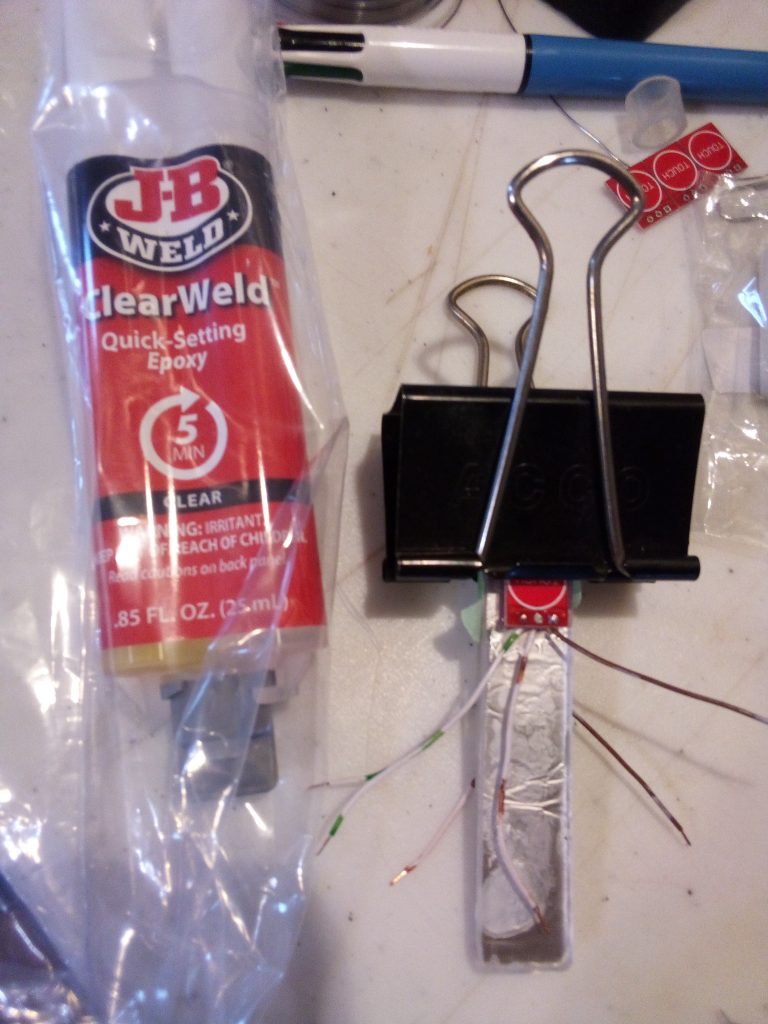
I left them to cure for an hour or two while I did other stuff around the house, then started to solder the few parts together. Using perfboard just to mount two transistors seemed unnecessary, and I decided to just assemble everything free-floating and rely on the heat-shrink tubing to hold it all together.
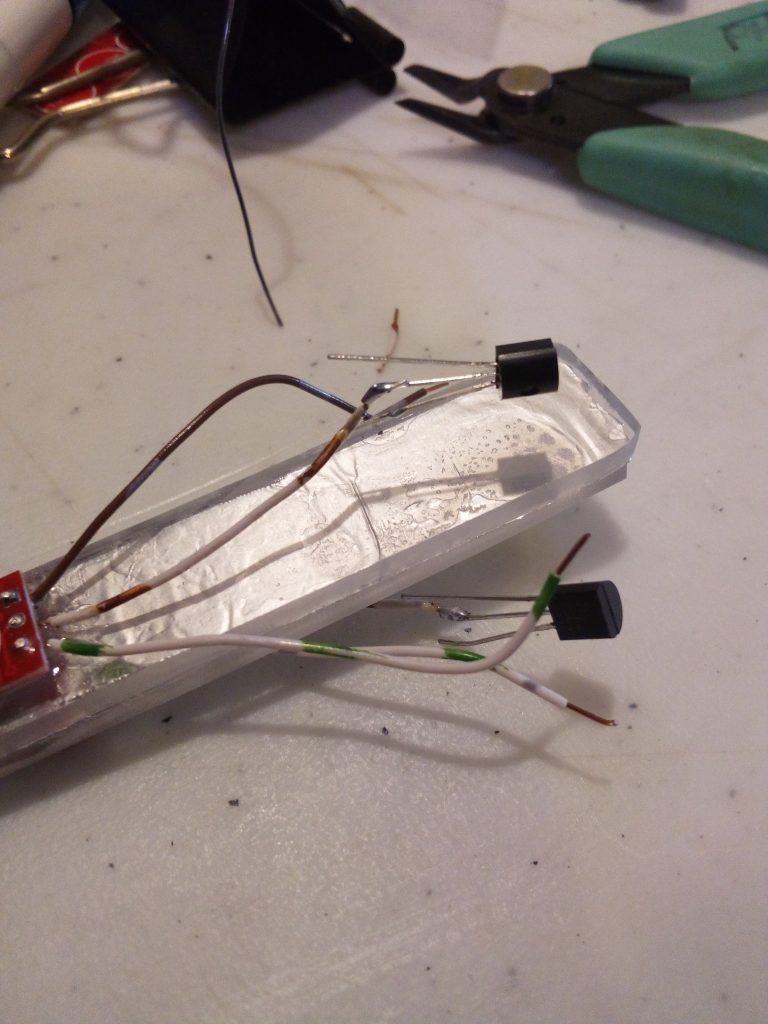
When I finished the last connections I flipped the little switch on the battery holder and got an unpleasant surprise: it didn’t work! After checking my wiring repeatedly then checking the battery and switch, it seemed that the only remaining possibility was a bad or damaged (by careless soldering?) transistor. A couple of quick snips removed them from the circuit and I tried again; this time the sensors worked just fine!
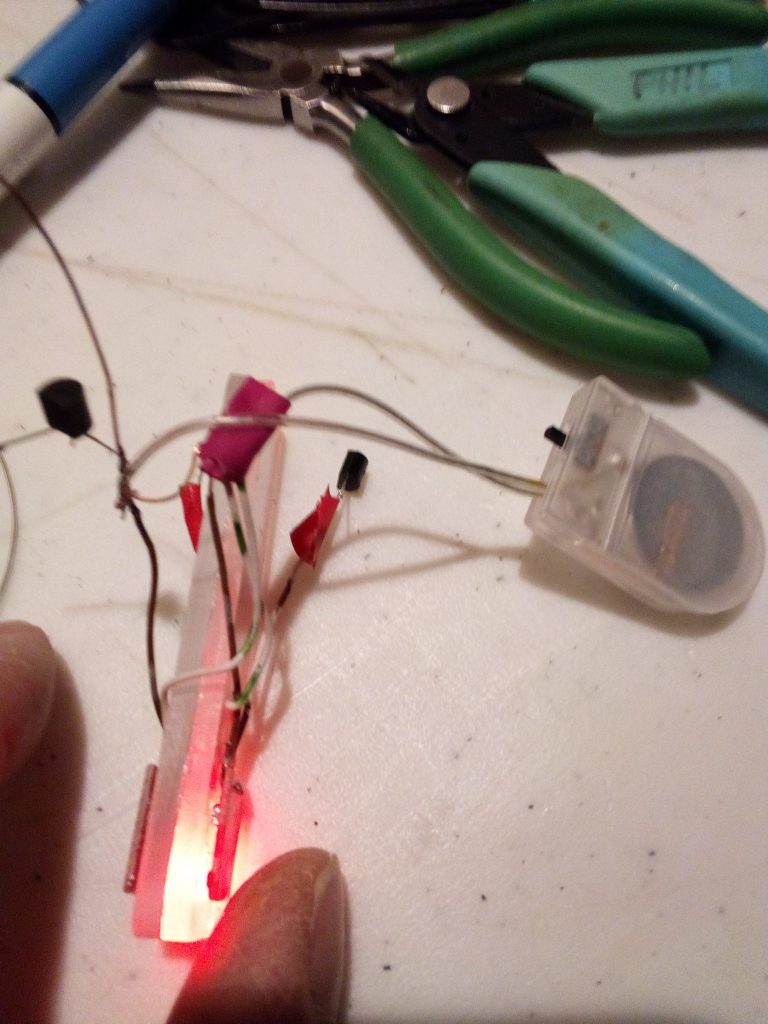
October 31st
That’s the good news, then; most of this project is salvageable! I’ll be busy for a couple of days and will pick this back up on Saturday; not sure if I will continue updating this post or start a new one at that time.
Thanks for visiting, and thanks for following the continuing story of this project!
Comments
3 responses to “Touch paddle project, with updates”
[…] This project got started in October last year and is finally (mostly) finished! […]
[…] puts out mono audio on both tip and ring of a standard 3.5 mm TRS jack. The still unfinished touch-paddle project occupies the other arm of the 3rd-hand stand; this is the next project in line to be completed. (or […]
[…] The touch-paddle project, revived […]